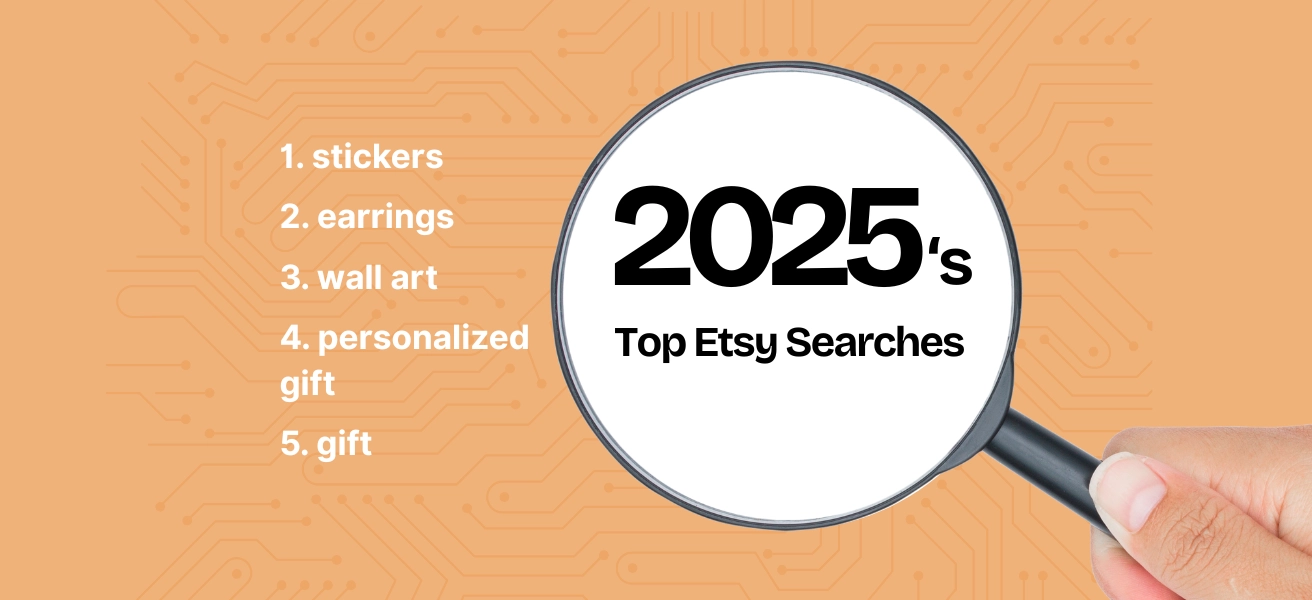With more and more people selling on Etsy than ever before, competition analysis is crucial for success on the marketplace. Understanding who your competitors are and what they’re doing helps to make informed decisions and stay ahead in a competitive market.
eRank simplifies this process for its members, providing tools to easily identify, track, and analyze competitors. In this blog post, we guide you through the steps to conduct an effective competition analysis and adjust your strategies for optimal performance.
The Different Types of Competitors
Understanding the types of competitors you face is crucial for crafting effective strategies. Competitors can be broadly classified into direct and indirect categories.
Direct Competitors
These are businesses that offer the same or very similar products or services as you do. They target the same customer base and operate in the same market.
Example: If you sell vintage clothing for modern women, your direct competition are other Etsy vintage shops that specialize in clothing for women with similar style and audience.
Indirect Competitors
These competitors offer products or services that are different but can serve the same need or solve the same problem for your customers. Indirect competitors might target the same customer base with different products.
Example: If you sell vintage clothing for women, your indirect competition include Etsy handmade shops that sell modern, retro-inspired clothing. While these shops don’t sell authentic vintage items, they appeal to the same aesthetic and attract customers with an interest in retro fashion.
How to Identify and Track Your Competitors
Staying ahead of your competitors on Etsy requires a proactive approach to identifying and tracking their activities. eRank provides a suite of tools designed to simplify this process, making it easier for you to keep an eye on your competition.
- Rank Checker: Search for the top-ranked listings of specific keywords.
- Top Sellers: Identify direct and indirect competitors by searching for Etsy top sellers in your main product category.
- eRank Extension: Use eRank Chrome Extension or the Shortcut Button to search for similar products while browsing on Etsy.com.
- Tracking Competitors: Click on the “eye icon” available in most of the tools to save the competitors you wish to track. Find the list of tracked competitors in the Sales section under Competitor Research.
Conducting In-Depth Analysis on Your Top Competitors
To gain a competitive edge on Etsy, it’s essential to go beyond surface-level observations and conduct a thorough analysis of your top competitors. By delving into key aspects of their shops, you uncover valuable insights that inform your strategies. This in-depth analysis involves examining various elements such as sales performance, inventory strategies, pricing, and promotional activities.
By systematically evaluating these components, you identify opportunities for improvement and innovation within your own business. Here’s a step-by-step guide on how to conduct a comprehensive analysis of 2-3 of your main competitors.
- Competitor Shop Info: Deep dive into your top competitors’ shops under Competitor Research to examine number of sales per month, tenure on Etsy, and number of listings
- Competitor Listings: Analyze inventory strategy and product innovation from your competitors. Filter listings by the number of sales to identify best-performing products.
- Competitor Tags: Save the tags used in top-ranked listings that could be effective for your own listings. It’s important to remember that while your top competitors have built a strong presence and reputation, they may not necessarily have the most optimized tag strategy. However, analyzing their tags can provide valuable insights that you might consider testing to refine your own approach to achieve the best results.
- Etsy Shop Analysis: Visit your top competitors’ shops on Etsy to evaluate pricing strategy, product photography quality, shop policies, customer service, customer reviews, branding and positioning, promotional activities, and social media presence.
💡Update: As of July 2025, Competitor Tags and Competitor Listings have merged with the updated Shop Info tool, making it easier than ever to view data from your competition. Access the updated tool here: https://members.erank.com/shop-info.
Use Sites Tool for Competitive Analysis Outside of Etsy
- Expand Your Research: Use social media and Google search to identify online competitors outside of Etsy.
- Site Info: Enter website addresses in Site info on eRank to view ranking and traffic sources.
- Site Lists: Create a list and keep track of competitors to stay informed on where to possibly sell next.
Develop Actionable Insights
- Identify Opportunities: Find areas to differentiate your products or improve offerings.
- Refine Strategies: Adjust your pricing, product descriptions, photos, and marketing strategies based on your findings.
- Monitor Regularly: Keep track of your competitors to stay updated with their strategies and market changes.
Conducting thorough competition analysis is essential for staying ahead on Etsy. Leverage eRank’s comprehensive research tools to identify and track your competitors, analyze their strategies, and adjust your own to maintain a competitive edge. Regularly monitoring and refining your approach helps to ensure continued success in the ever-evolving marketplace.








